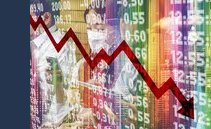Debt/GDP ratio: what it is and why it is used by economists as a "thermometer" to evaluate the health of a country’s economy.

The debt/GDP ratio is one of those indicators that always seems to be in the sights of analysts and experts. However, it is not clear to everyone why the relationship between a state’s public debt and its Gross Domestic Product is so important.
However, it is increasingly used as a tool to measure the "state of health" of a country.
The debt/GDP ratio is gaining more and more importance since it tells us how much the country’s debt weighs on its finances and measures how much a country must repay to its creditors, that is, to all those who have purchased government bonds.
Let’s see below how it works and why it is so important for analysts and specialists.
Debt/GDP ratio: differences with deficit/GDP
First of all, it is necessary to distinguish the debt/GDP ratio with the public deficit. The latter measures the difference between the incoming revenue and the public expenditure incurred. According to EU parameters, for example, the public deficit must remain below 3% of GDP, even if there are few virtuous countries capable of respecting this limit.
There is, without a doubt, a close correlation between the two indicators: if there is a public deficit it means that the State has spent more than it has collected and, to do so, it was necessary the recourse to public debt.
This means that the public debt has increased since not enough bonds have been issued or taxes have been imposed to break even.
However, we must be careful: the debt/GDP ratio compares two different quantities.
The debt measures a "stock", a quantity calculated at a specific moment and which can, as often happens, accumulate over time.
The GDP, on the other hand, measures a flow quantity and corresponds to the total value of operations during a time interval taken as a unit of measurement.
It measures the productivity of a country: it quantifies the value of goods and services produced in a given period.
Precisely for this reason, comparing debt and GDP can lead to ambiguous and inconclusive analyses, which do not represent the real situation of a country.
Why then do we choose to relate public debt to GDP?
The answer is quite simple: being able to measure the possibility that a State has of repaying its debt.
Basically to understand how strong a country’s economy is, since if it manages to produce a deficit, with that it could be possible to pay off part of the public debt that the nation has.
leggi anche
Trading: What’s the Relationship between Inflation, Interest Rates, GDP and Unemployment?

Debt/GDP ratio: is it really that important?
Economists, however, are not able to indicate precisely when the threshold is reached the risk of a financial crisis becomes concrete.
This is because the so-called takes on significant weight. “financial illusion”: if subscribers, especially foreign ones, feel that the debt may escape the control of the Government, they will no longer be willing to entrust their capital to that State, creating crises of mistrust.
An attentive government must always balance, therefore, stricter rules that reduce the amount of debt with rules that relaunch the country’s productivity and economic development.
All this highlights the value, often underestimated, of a country’s credibility towards its economic partners and European and international institutions.
Original article published on Money.it Italy 2022-07-07 14:27:02. Original title: Cos’è il rapporto Debito/Pil, il termometro di ogni Paese




